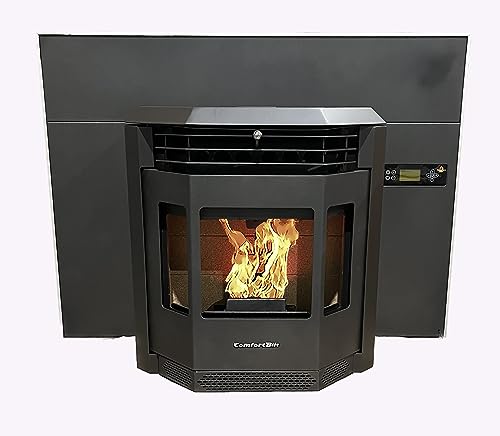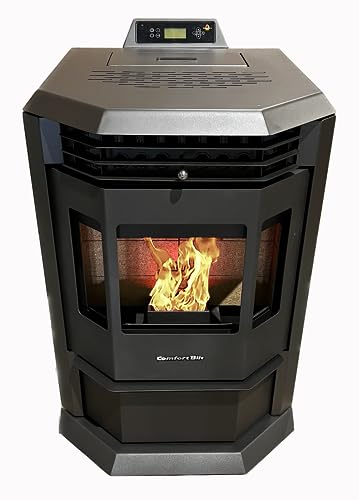You'll Never Guess This Pellet Stove Furnace's Benefits
페이지 정보

본문
 Pellet stove furnace (https://www.metooo.com)
Pellet stove furnace (https://www.metooo.com)ventless pellet stove stoves can be purchased as freestanding units or fireplace inserts that can give your home the appearance of an old-fashioned fireplace that burns wood. They are available as freestanding units or fireplace inserts that can give your home the appearance of an old-fashioned wood-burning fireplace.
The auger transports pellets from the hopper to the combustion chamber, where they are burned and produce heat. Sensors are used to monitor the fire and adjust the speed of operation to keep the desired temperature of the room.
1. Energy Efficiency
Pellet stoves make use of a non-toxic, renewable fuel made from compressed sawdust and other substances. They are usually put in landfills, but can also be used to create a clean, efficient source of heat. They aid homeowners in reducing their energy use and consequently greenhouse gas emissions. Many pellet stove users report that they recoup their initial investment in a few short years by reducing their heating bills.
Pellets are extremely compressed and more dense than natural wood, which makes them more efficient to burn. They also produce less creosote compared to traditional wood-burning fires. They are also packed in plastic bags to seal out moisture and need less frequent cleaning.
Like other heating systems pellet stoves need to be properly sized and vented. A professional technician will be able to determine the space requirements and venting requirements in order to get the most efficient results.
When the hearth is installed, it is built to size and the vent is inserted through a pre-cut hole in your home's siding. The vent can then be placed on the side wall or the roof, based on your preference and the local regulations.
After the vent and hearth are done, the pellet stove may be plugged in. Some manufacturers provide an electronic remote control that makes it simple to begin and keep the fire burning, whereas others offer additional sensors that monitor combustion and airflow flue temperatures, as well as pressure. If the system determines that it requires more or fewer pellets, it signals the auger to accelerate or slow down according to the situation.
All stoves come with a hopper which can hold between 35 and 130 pounds of pellets. The size of the hopper will determine the frequency at which you have to refill your stove. Larger hoppers allow for longer time periods before refills is needed. A grille draws air from the room, passes it over the heat exchanger and blows heated air in the living space via convection. A grate or auger spreads the pellets, while the pan beneath is used to collect any burned ones as well as the ashes of combustion.
Pellet stoves are more efficient in energy use than wood-burning models but not as efficient as natural gas or electric furnaces. Electric components that drive motorized components of stoves require a power source. This could be an issue in the event of power outage, but backup systems such as batteries and generators are available.
2. Low Maintenance
Pellet stoves are incredibly efficient, but just like any other major heating appliance, they require some maintenance to keep them running correctly. Cleaning regularly your stove's exhaust vent and stove will prevent the build-up of harmful creosote that can cause an explosion, fire or damage to your stove or home.
A pellet stove makes use of compressed natural particles (such as kernels, nutshells of corn or tiny pieces of scrapwood) made from wood or other materials. An auger powered by electricity will feed the pellets from a fuel tank into the burner, and into the combustion chamber. The thermostat you set controls the rate of pellets being fed to the burner. The fire can be kept burning, or it can be reduced or even snuffed out according to the temperature you set. When the fire is out the ash is then thrown into an empty ash tin beneath the burner. It can then be easily removed and then disposed of.
Pellets are made from byproducts that could have been discarded in the process of processing lumber. They are a renewable resource and emit less particulates than traditional wood-burning stoves, making pellet stoves a cleaner heat source. The amount of carbon monoxide, carcinogens, and other harmful chemicals released by pellet stoves is much lower than those with modern wood stoves that are EPA-certified.
Because of the low emissions, these appliances are not required to be vented through a chimney as traditional wood stoves, but they must be properly vented through a wall or another external structure. Pellet stoves have flue ports that open on the rear or top of the appliance and are connected to a vent pipe that extends outside the home.
One disadvantage of a pellet stove is that you have to purchase or store enough pellets to last through the winter season. Pellet stove owners typically use three tons of wood pellets per winter, which is a cost of $200 per ton. The cost can be high however they are much cheaper than purchasing firewood and hauling it for a fireplace or wood-burning stove. It is recommended to purchase enough pellets so that your stove will run throughout the winter's coldest months. Also, you must have a space to keep the pellets (preferably dry and cool).
3. Reduced Carbon Footprint
Pellet stoves generate heat from renewable biomass fuel, reducing reliance on finite fossils fuels. This helps reduce the carbon footprint and also helps diversify the energy sources used in homes.
Even the latest wood stoves that are EPA certified emit significantly less carbon dioxide than pellet stoves. The emissions from pellet stoves are significantly lower than the ones from gas furnaces. Pellets are made from sawdust or bark, as well as other lumber fragments. They can also include soybeans, corn or other agricultural waste. When they are burned, they emit less particulates, which can cause respiratory problems and allergic reactions as well as carcinogens and nitrous oxide.
The main difference between a wood stove and a pellet stove is the feed system. pellet stove dealers near me stoves have hoppers that hold the pellets. When the thermostat or sensors indicate that the room requires heating, the auger is turned and the pellets are fed into the combustion chamber where they burn and produce heat. The air from the combustion chamber flows through a heat exchanger that transmits the heat to the blower before releasing it into the room. This process produces very low emissions, and creosote is not created.
After the hopper is emptied, the ash is removed using a cyclone and it is then deposited into an ash container. The stove is equipped with a fan that circulates warm, fresh air into the room. Most pellet stoves require minimal maintenance and have a large viewing space for you and your family members to enjoy the flames.
The quality of pellets is the main element that influences pellet stove emissions. Poor-quality pellets produce more emissions. When selecting your pellets, ensure that they're certified to meet certain standards and don't contain other ingredients, such as petroleum products or urea. Also look for a company that has a warranty and will repair or replace parts in case of a problem. Certain states provide homeowners with a tax credit if they want to go even greener. This is a great opportunity to offset the initial cost of this type of stove and make it easier to install.
4. Reduced Noise
Pellet stoves produce less smoke and exhaust when compared to wood burning fireplaces. A fan is used to spread heat more evenly across the room. This feature is one of the reasons that pellet stoves require less maintenance than traditional wood stoves. While wood stoves must be frequently cleaned of dust and chemicals pellet stoves require a specialized metal vacuum cleaner for regular cleaning.
Many manufacturers have made a conscious effort to create stoves that will be simple to set up, operate and maintain. They also design their appliances with a variety of styles that can be matched to your home's decor. Some models include WIFI, a remote control, and programmable thermostat.
Most pellet stoves come with an enormous fuel hopper that can hold anywhere from 35 to 130 pounds of pellets. The pellets are then fed into the combustion chamber via an auger. The speed at which pellets are delivered to the burner determines how hot the fire is as well as the amount of heat it produces. The hopper could be filled with hardwood pellets, made from dense wood species like hickory and oak or softwood pellets. Some stoves will even make use of alternative biomass pellets such as those made from corn or switchgrass, which can be an eco-friendly option.
Pellet stoves produce less smoke and require less maintenance due to the fact that they use less polluting fuel than wood-burning fireplaces. They do not need chimneys, making them a better option for retrofits or new construction.
As opposed to wood stoves that need to be kept regularly free of creosote as well as other chemicals, pellet stoves require periodic inspections for proper operation and maintenance. Based on the model, this could include regular inspections and cleaning of the accumulated the ash or "clinker," as well as the fan and motor. Your appliance dealer can provide the proper procedure for the specific model and brand. They can also provide details regarding safety and storage, and assist you in finding the right fuel for your stove.

- 이전글You'll Never Guess This Pellet Stoves Small's Tricks 24.11.01
- 다음글The Best Pellet Stoves Dealers Near Me Tricks For Changing Your Life 24.11.01
댓글목록
등록된 댓글이 없습니다.